Stardock Object Desktop – Amazing OS/2 desktop enhancement and system utilities.
The original OS/2 desktop is quite simplistic; to access drives, applications, or system settings, you have to open several windows, and finally double-click on one of the icons to launch a given application, or perform a given task. Wouldn't it be great to have a start menu including main categories like "System setup", "Applications", "Drives", "Help", that are expanded by a simple mouse-click and show the different setup utilities, allow to directly browse the file system, give access to the installed applications and the help documentation? I think that you should give Stardock Object Desktop a try; there are chances that you'll find it just as amazing as I do.
"Object Desktop is a set of utilities for OS/2 power users. It provides a number of visual enhancements, define hotkeys, an improved editor, desktop configuration backup, archive management, system help advisors, and system backup.", the application is described at the WinWorld website. It's from their Stardock Object Desktop 1.5.x page that you can download the professional edition of this great piece of software as a CD ISO.
This text is about the installation of the application on OS/2 Warp 3 (red spine). It should be the same for other Warp 3 releases, as well as for Warp 4.
The installation is straightforward; just launch INSTALL.CMD and follow the instructions of the setup wizard. During installation, you can select the components that you want to install and the installation directory (default: C:\OBJDESK). Concerning the components, there is no reason not to install them all; push the Select all button to do so.
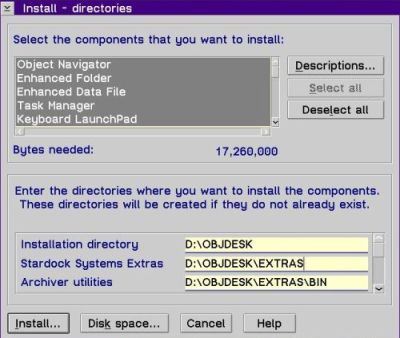
|
The setup program asks for a serial number in order to install the software. You can find it on the picture of the installation CD, included within the WinWorld download archive.
During install, you are told that the Stardock Internet Shell requires IBM Webexplorer 1.0.3 or later, and isn't installed if this application is not present on your system.
Files are copied, and when done, you are told that installation is complete and that you have to restart the computer (CONFIG.SYS has automatically been modified).
Object Desktop starts automatically up when rebooting. The application appears as a window on the right side of the screen. You can see on the screenshot below, that Object Desktop supports 4 virtual desktops with preview of what they contain. Beneath, you find an indication about CPU usage, then the main categories of the Start menu, information about memory and disk usage, and the display of the current time. You can also see the Tab Launchpad, containing several categories of programs, that you can launch from there. To note, that the application is highly configurable, in particular is it possible to add new categories and programs.
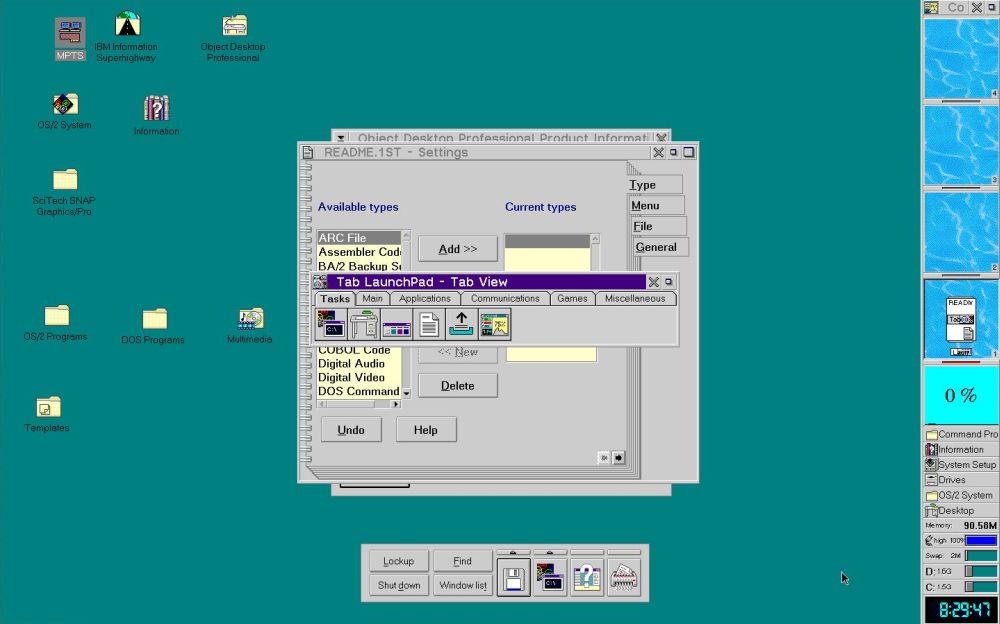
|
Concerning the Start menu, Information gives access to the complete OS/2 documentation. System setup gives access to the OS/2 hardware and software configuration utilities, including a System Information Tool, that lets us view details about the hardware and the OS. The screenshot shows the information about the installed and used memory.
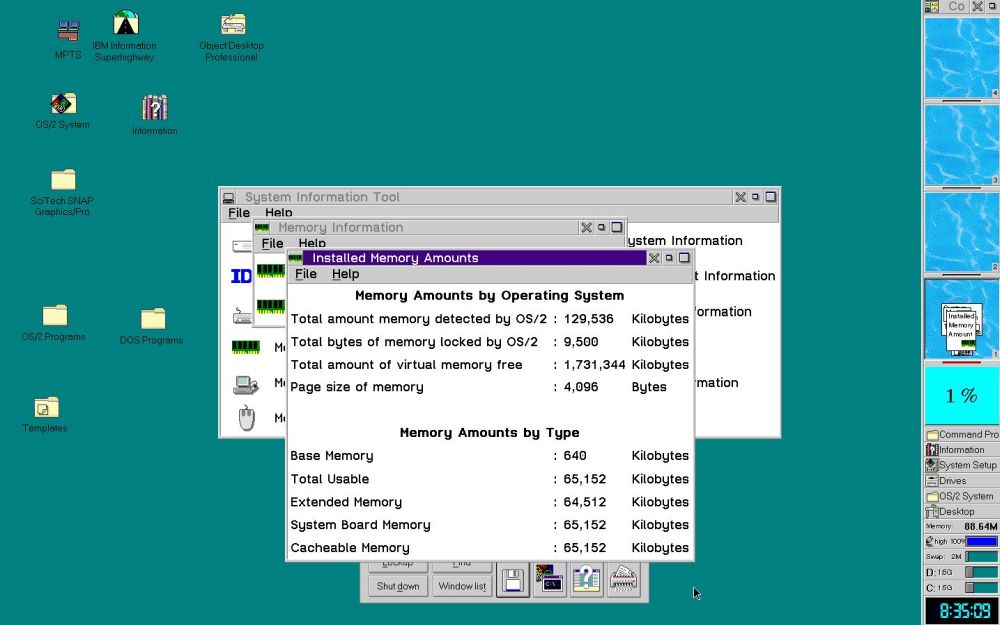
|
The start menu item Drives allows us to browse the file system. OS/2 System allows to launch the different applications (grouped by category). Desktop corresponds to the OS/2 desktop, clicking a menu item expands this item showing the content of the corresponding window when double-clicking a folder on the desktop. The screenshot shows the expansion of Object Desktop Professional with items like Control Center, Tab Launchpad, and Task Manager.
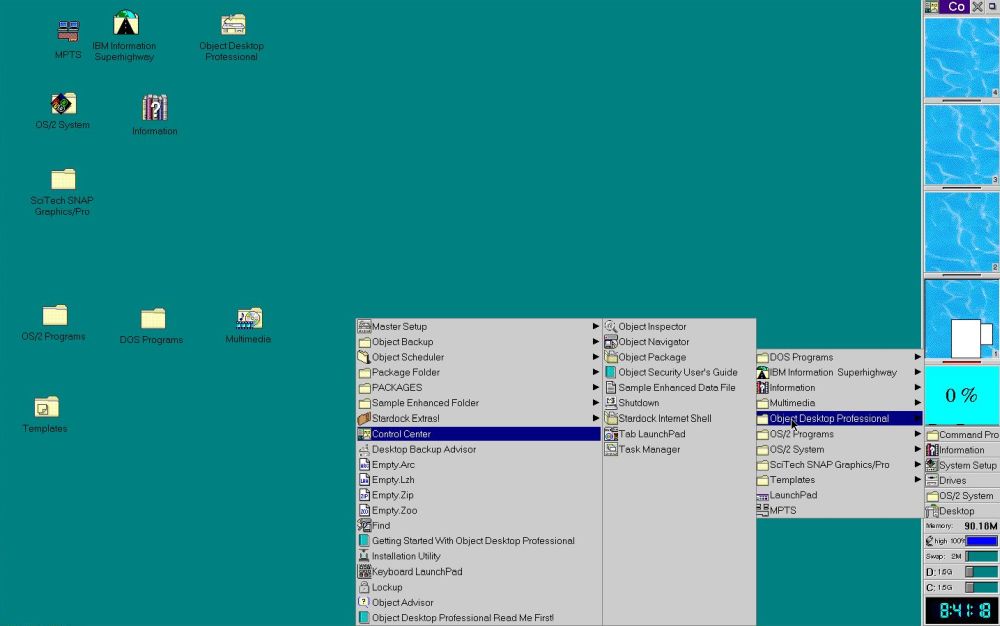
|
To terminate this text, here is a screenshot showing some information concerning Object Desktop, as it appears in the application's documentation.
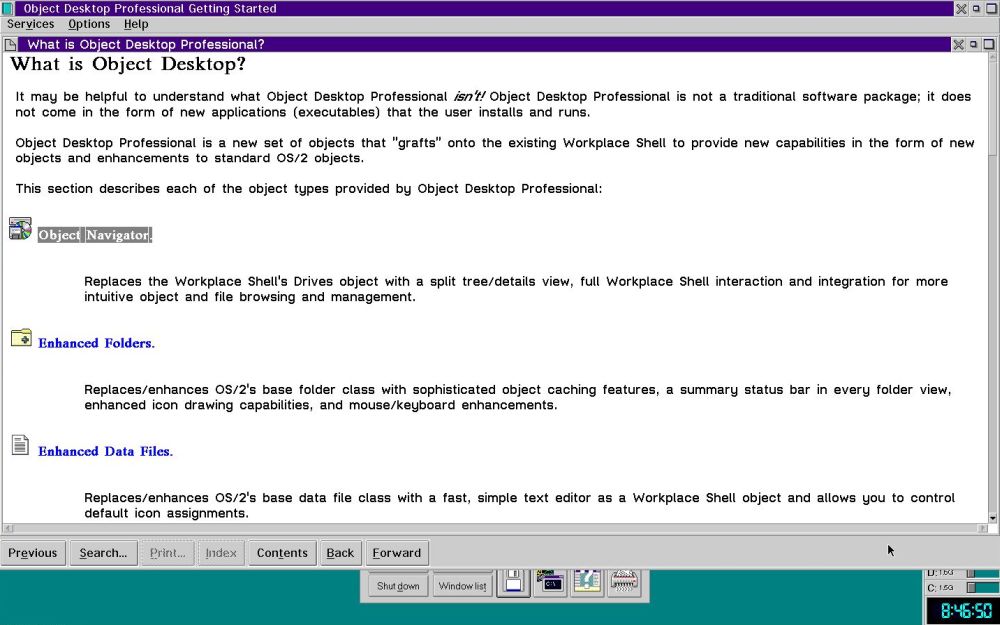
|
If you like this page, please, support me and this website by signing my guestbook.